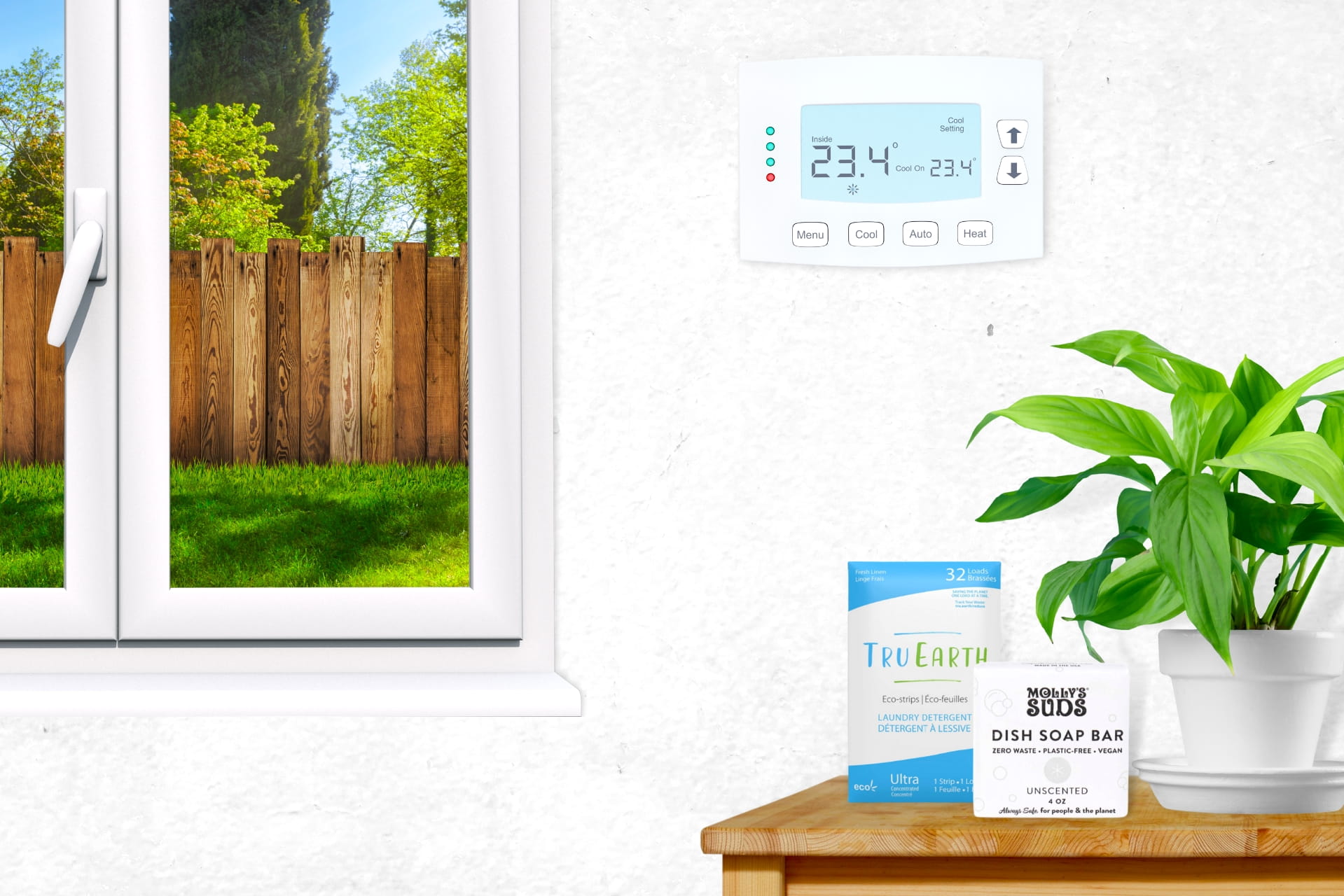
How to Reduce Your Energy Consumption During the Warmer Months
As the weather gets warmer, the temperature isn’t the only thing on the rise, your energy bills can be as well. This is because air conditioning units are the biggest energy consuming appliance in the home — and since the demand for electricity is higher in the warmer months, the prices also increase as well.
However, the reason for minimizing your energy consumption is not only about money, it also more importantly helps to reduce your carbon footprint. Minimizing the energy usage in your home can help to reduce carbon emissions resulting in less pollution in the air and water, and a healthier planet for our future.
Reducing your energy consumption is easier than you think and can be a matter of making a few small changes that overtime can have a tremendously positive impact on our planet. Read more to find out the 15 small changes you can make to reduce your energy consumption during the warmer months.
1. Turn Off the Lights to Reduce Energy Consumption
You’ve probably heard this one before — and for good reason! Turning off the lights when you aren’t using a room can be an efficient energy saver, and is probably the easiest way to reduce your energy consumption. Turning off the lights is more of a habit that might take some getting used to in the beginning, but once you get into the routine of turning the lights off when you leave a room (even if it’s just for a quick minute) you can train yourself to do so always! Being mindful of when you actually need the light on is important too -- if it’s during the day, there’s a chance that you don't need to use the lights in your home, as natural sunlight is sufficient enough.
2. Seal Any Air Leaks to Minimize Energy Waste
Your windows might not be the first place you look when you’re thinking of ways to reduce your energy costs, but there’s a very important reason why you should. Leaks in the seal of your windows and doors can allow for cool air to escape from your home and also for the hot air to come in, which can prevent your home from cooling down as quickly and efficiently. Inspect all of the seals in your windows and doors for potential opportunities for leaks. An easy way to check for a leak or crack in the seal is if there is any sunlight coming from the sealing, which could indicate a crack. If you notice a leak or crack, you can use caulking or a window strip to seal it.
3. Clean or Replace Air Filters to Save Energy
It’s the first day of warmer weather and you go to turn on your air conditioning unit for the first time, only to notice, it’s not really working that great.You’re probably wondering, “Oh great, is it broken?” The problem thankfully might be a lot more simple than you may think! Dirty air filters could be the reason your A/C unit isn't working properly. This is because a dirty air filter can reduce the amount of air circulation in your home and affect how efficiently your HVAC unit is working overall. Before starting up your A/C unit for the season, clean or replace the air filter in your unit routinely to ensure that your A/C is working efficiently and at its best. If you notice any issues after changing the filters in your unit, it is good to have a technician take a look before the issue becomes worse!
4. Invest in Energy Saving Lights to Reduce Energy Use
Now we’ve told you to turn off the lights, but if you need to have the lights on, make sure they’re energy efficient lights! Although LED lights are more expensive than traditional light bulbs, in the long run you end up saving more money and more energy by using LED lights — and so the money you put in is worth it!
5. Plant Trees or Greenery Around Your Home to Make it More Energy Efficient
Not only do they add some beauty to your yard, planting trees and bushes around your home can help to reduce your energy consumption — especially if you plant them in front of your windows. This is because trees and bushes can help reduce and block the amount of direct sunlight entering your home, thus minimizing the amount of heat in your home. They also create shade around your home which can help to keep your home cooler in the warmer months — and result in using less energy to keep your home cool.
6. Use a Fan to Circulate Air and Reduce Energy Consumption
Although it may seem so, using a ceiling fan doesn't actually make the air in your home cooler. However it does give off a cooling effect and can help to circulate the air in your home -- which can help the cool air when you have the A/C on travel throughout your home. Having fans running in your home can help to maintain a consistent temperature in your home — and the cooling effect of the fan can be a reason to set your a few notches higher than usual too.
7. Make Energy-Efficient Meals to Save Energy
Here’s your reason to BBQ all season long: by cooking your main dishes, like chicken, steak and seafood, outside of the home, you can help to reduce the amount of energy your home uses! Ordering takeout as a treat or making dishes that do not require the stove or oven, such as salads, sandwiches, and barbecue, are also great ways to help keep your home cool and your energy bills lower during the warmer months. Bonus: You can also eat your meals outside in the backyard to further minimize the heat in the kitchen as well.
8. Check Your Air Vents to Minimize Energy Use
Another sneaky place that you may not have thought about checking is your air vents in various rooms of your home! If certain vents are blocked by furniture or rugs, then those areas of your home will feel warmer which may leave you reaching for the thermostat. Double check each vent in your home and make sure that nothing is blocking the vents, to ensure optimal circulation of the cool air!
9. Reduce Your Water Use to Save Energy
“Don’t let the water run” I’m sure you heard this plenty of times growing up — but this doesn’t only apply to when you’re washing your hands or brushing your teeth. Reduce the amount of water you use by taking shorter showers and opting for showering over bathing, as it tends to use less water. Try to keep your showers between 5 and 10 minutes, to reduce the amount of water used even more.
10. Use Your Dishwasher to Reduce Water Consumption
Did you know that most dishwashers use less water than hand washing your dishes? If you have a dishwasher, using it over traditional handwashing can help to reduce the amount of water you use. Use an eco-friendly dishwashing detergent for the safest cleaning solution for your dishes. If you do not have a dishwasher, scrape your plates to remove stuck on food and fill the sink with a few centimeters of water and let all dishes soak in soapy water (use a natural, eco-friendly dish soap) and then rinse clean (turning off the water in between washes).
11. Unplug Any Electronics You’re Not Using to Save Energy
Many of our electronics still use energy if they are plugged in, even when they are not in use. Unplugging your appliances (such as your laptop, toaster, and lamos) can help to reduce the amount of energy wasted and lower your electricity consumption and carbon footprint.
12. Wash Clothes in Cold Water Can Minimize Energy Use
This is not only a great tip for the warmer months, but year round! About 90% of the energy our washing machine uses goes into heating the water -- and more surprisingly you don't need to wash your clothes in hot water in order to clean them (unless they are stained). So you can reduce the amount of energy your washing machine uses by washing your clothes in a warm or cold temperature. Washing your clothes in cold water can also help to extend the lifetime of your clothes and reduce color fading. Ensure to use an eco-friendly laundry detergent made from natural, plant-based ingredients to reduce the amount of toxins and pollutants in the air as well.
13. Line Dry Your Clothes to Minimize Energy
In the warmer months, skip the dryer and hang your clothes to dry on a clothing line or drying rack to minimize the amount of energy used in your home. Air drying your clothes can also help maintain the color and quality of your clothes, thus making them last longer.
14. Close Your Blinds and Curtains to Help Save on Energy
Keeping your home cool during the warmer months includes keeping your blinds and curtains closed, especially during peak hours when the sun is direct and the strongest. By keeping your blinds closed and minimizing the amount of sunlight into your home, you are helping to keep the overall temperature in your home down. This is especially important if you have the A/C running, as it will help to reduce the amount your A/C has to work to keep your home cool -- which means less energy being used and more money being saved.
15. Keep Doors in Your Home Open
During the warmer months, good ventilation is important. Keeping your home well ventilated, and the cool air flowing is important to keeping your home cool. Keeping doors to various rooms in your home open to ensure proper air flow can help reduce the temperature in your home.
Final Thoughts
Reducing your energy consumption and minimizing your carbon footprint starts with your home, by making small, eco-friendly changes that can have a tremendous impact over time for the planet. Making these small changes can also result in spending less money each month on your energy bills as well.






